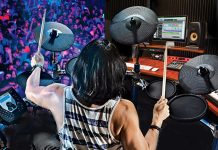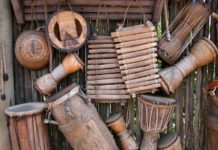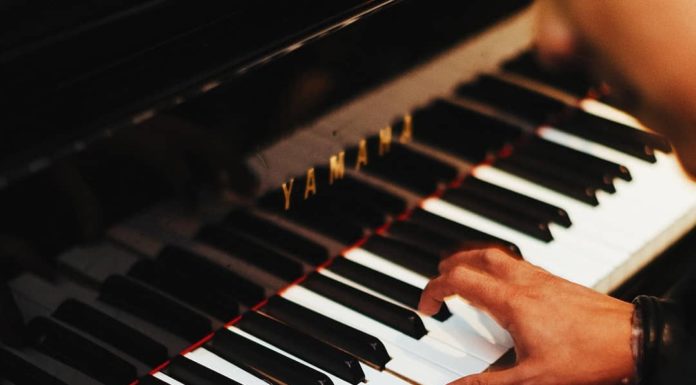If you are looking to perform in front of a live audience or record your music in a studio, you need to understand the different ways in which you can ensure that the audience and the machines get a good feel of your music. There are many instances where even seasoned drummers don’t really understand how to use microphones with their drum set to get the right kind of sound output.
The main reason behind this is that different parts of the drum set will need different mics to be placed in different areas. If you are looking to get a deeper insight into mic placement, you have come to the right place!
How to Position Mics with a Drum Set
The first thing that you need to keep in mind while deciding on the positioning of mics with your drum set is the number of mics that are available for use. If you already have a particular placement in mind but there aren’t as many mics available, you will be required to readjust your mic strategy accordingly. Therefore, the first step of the process is gauging how many mics are available.
After this, you will be required to gauge how many mics are required for you to achieve the overall effect that you are aiming at. You need to give enough thought to what you expect to hear as the end result of the mic positioning and placement.
While a sound or audio engineer may use anywhere between two to twelve mics when setting up a regular drum set, a person may not have the same level of freedom and resources in a home studio. Therefore, it is important for you to prioritize.
How To Mic Drums For Live Performances
In the section above, the importance of prioritization was mentioned. This means that if you don’t have too many mics at hand for a particular performance or recording, you need to see what placement will give you the best overall effect in terms of audio quality.
While it can be confusing to decide what should get more attention, this guide should be able to help you through the process, so keep reading!
Drum Overhead Mic Placement
If you have a very limited number of mics at your disposal — let’s say just two — these are likely to be overhead or room mics that help you get a balanced stereo image of the entire drum set as a whole. We highly recommend looking over our best dynamic microphone article if you don’t have mics yet.
Even if you have mics for other parts of the drum set, overheads can work in conjunction with those to give you a better overall effect. There isn’t just one approach that is adopted for overhead mics.
For example, Eddie Kramer’s 3-mic technique uses mics in a triangular shape over the drums, while Glyn Johns’ 3-mic technique uses mics that are placed equidistant from the snare drum.
The most common one, however, is placing two dynamic mics above the drums on either side of the kit.
Kick Drum
As kick drums can come in a wide variety of sizes, the different techniques used to position them can also vary significantly. Some of the more popular of these techniques are listed below:
- Placing One Mic Outside the Front Head — The most common technique is to place the mic outside the main drum but there can be a lot of variability in terms of sound depending on where it is placed on the head and the distance between the skin and the mic.
- Placing One Boundary Mic Inside the Kick — If your drum set comes with a hole in the resonant head, placing a mic — on a pillow — inside the actual drum can work well and prevent bleeding out of sound.
- Placing One Stand Mic Inside the Kick — There are also mics with stands that can be placed within the kick drum.
- Placing Two Mics Inside Kick — You can place both of the mics mentioned in the two points above inside the kick drum for more power and better performance.
- Placing One Mic Inside and One Mic Outside — Finally, you have the option of placing one mic inside and another one outside the kick.
Snare Drum
The sound produced by a snare drum can vary significantly based on the placement of the mic, so make sure you try to position it in the most effective manner.
The most common — and possibly the simplest — way of positioning a mic is placing it slightly over the snare — about 1.5 inches or so above the skin.
However, if you are looking for more of that buzz that the snare is capable of giving, you can consider adding another mic under the drum.
Hi-Hat
Hi-hats are not really the softest parts of the drum set when it comes to sound, so many musicians and engineers just don’t end up positioning a mic close to them.
However, it is recommended that you place a mic near your hi-hat — especially if you have enough mics — in case you need to use it at a later point.
As all hi-hats can vary in terms of sound, it is important that you try a couple of positions before deciding on one.
Toms
There are a ton of placement options for toms but most people prefer to use mics and techniques that don’t stand out from the rest of the setup, especially during live performances or videos. If your cymbals are too low, you may have to use clip-on mics or other such variants.
There are a couple of things that you need to keep in mind when you are placing mics to go with your drum set, for example, the size and acoustics of the room that you are performing in, the placement of the mics at the exact center of the equipment, a safe distance of about three fingers from the surface of the drums and cymbals, and so on.
Once you have ensured that all these things are in place, you will be able to get the most out of your drum set and make your performance an enjoyable experience not just for yourself but also for the people around you!













